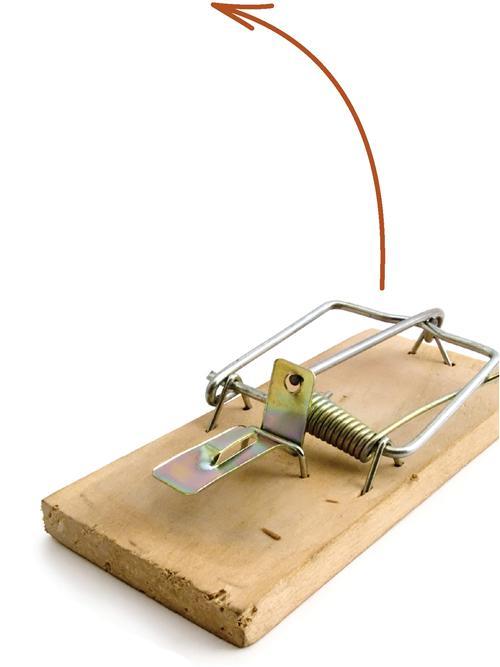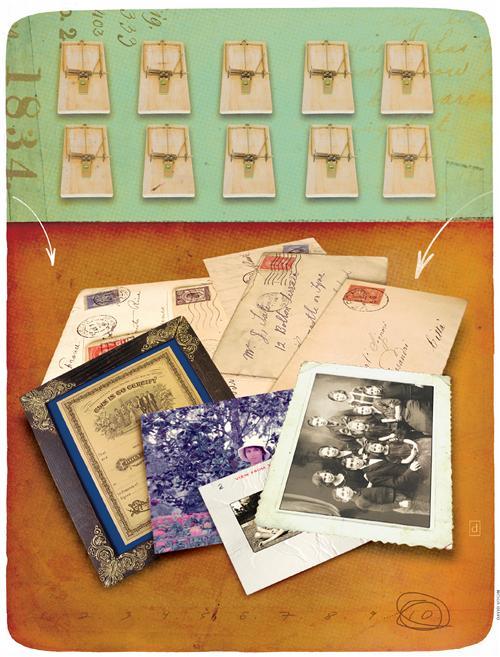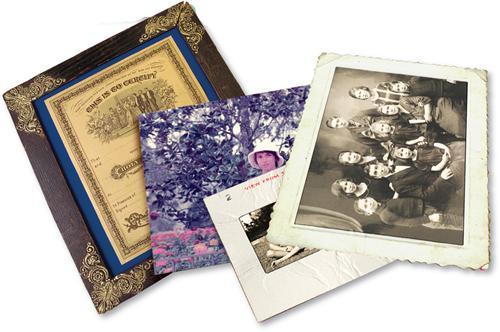“D’oh!” That’s what Homer, the bumbling patriarch on “The Simpsons,” exclaims when he messes up by miscalculating the apocalypse by 30 minutes or hiring the fugitive Babysitter Bandit to stay with Bart, Lisa and Maggie.
There’s a little bit of Homer in all of us — his catchphrase is so popular, it made the Oxford English Dictionary in 2001. Even family historians, careful as we are, experience our share of “d’oh!” moments, as in, “D’oh! I ordered micro-film for the wrong court records!” or “D’oh! I just spent six months on someone else’s family!”
For the most part, genealogists tend to be a clever, meticulous and yes, sometimes obsessive bunch. But it’s easy to make mistakes when records spell Grandma McCzertyvilason’s last name 23 ways, family stories are more hearsay than truth and brick walls seem to leap into our paths. Thankfully, we can learn from past errors and become smarter researchers. So (no offense to Homer Simpson) save yourself the trouble of saying “d’oh!” in the first place — at least where these 10 top genealogy mistakes are concerned. Watch out for them, and you can skip feeling sheepish and go straight to being savvy.
1. Not asking relatives
Most genealogists kick themselves over “the ones that got away.” Those are the relatives, now deceased, you’ve always put off visiting or never thought to ask about family history. My biggest regret is not talking to my maternal grandmother, Verona Straka Figlar. Even though I spent time with her into my adulthood, I never once asked her about her life in Slovakia or immigrating to the United States.
Since family members are often the only source for the back story, talking to them should be at the top of your genealogy to-do list. See the March 2008 Family Tree Magazine and <www.familytreemagazine.com/askyourfamily> for suggested questions and interview advice. If your relative lives far away, you can talk over the phone or send questions in a letter or e-mail. Memory books, such as The Book of Myself: A Do-It-Yourself Autobiography in 201 Questions by Carl Marshall and David Marshall (Hyperion), or The Story of a Lifetime: A Keepsake of Personal Memoirs by Stephen Pavuk and Pamela Pavuk (TriAngel) also can jump start an oral history — you can use it just for the questions or give it to the person to fill out. Or perhaps you can enlist the help of another relative or a friend who lives closer to conduct the interview.
2. Relying too much on the Internet
If you’re starting genealogy today, you probably wonder how veteran researchers ever lived without the Internet. It certainly has streamlined research: Who wouldn’t prefer to hunt for Great-grandpa’s passenger list or naturalization record from the comfort of home? But when technology promises key genealogical data at the simple click of a mouse, it’s easy to get lazy about seeking other sources and frustrated if database searches fail to produce results. Plus, instant access to a few basic sources — census, immigration and vital records — makes it tempting to neglect the nuggets that may be hiding in the family Bible, church books, a local historical society and the overgrowth at the back of your ancestral town’s oldest cemetery.

(For the old-school genealogists out there, the converse is true, too: You shouldn’t bypass the Internet. The idea that you can’t do real research online is no longer true. In fact, Web-based genealogy tools can speed up some tasks considerably, and open doors that wouldn’t otherwise exist — such as buying a long-lost family Bible on eBay <ebay.com>.)
3. Neglecting to cite sources
Whenever you find new information, you might say you’ll write down the name of the book later or think you’ll never need to look at that particular source again. But what if your photocopy gets lost, or you missed something and need to take a second look at the original? Or maybe you’ll want to compare it with a conflicting resource you find later.
It’s essential to keep track of where you find all your genealogy information. Source citations not only help you remember which resources you’ve already consulted, but they also enable you (or a future family historian) to easily find the source again. So whether you’re interviewing a family member, searching a Web site, examining a photograph or reading a name off a headstone, be sure to document the source. Include the source’s name, its location and the date you consulted it. It’s also helpful to make a photocopy or photograph of the original record when possible. If not, opt to record an abstract or transcription. For source documentation guidance, see Elizabeth Shown Mills’ Evidence Explained: Citing History Sources from Artifacts to Cyberspace (Genealogical Publishing Co., also available via PDF download from <footnote.com>).
4. Sticking to one spelling
Limit your searches to a single name or spelling and you’ll undoubtedly miss a person in key records. Due to marriage, immigration, release from slavery and other reasons, your ancestor might have used several different names during his lifetime. He may have changed his name to sound more “American,” or to make it easier to remember. To complicate matters, county clerks and census takers commonly misspelled names, and modern indexers may misread them — even short or simple names. For example, I’ve found my paternal grandfather John Alzo in online census databases under John Elza and John Olza.
Create a list of variant spellings for your ancestral names. To learn common versions and find where they’re most popular, try researching their origins — for how-tos, see the May 2008 Family Tree Magazine. Many online databases offer a “sounds like” or Soundex search option to find variant spellings. If not, run a search for each variant on your list.
Try these database-searching tricks, too: Plug in a middle name, initials, or nickname (such as Betty or Beth for Elizabeth; or Rick for Richard); or type in both the married and maiden names for females. If your searches keep turning up empty, and you really think the record’s there, you may have to resort to browsing. To find John Alzo’s WWI draft card in Ancestry.com’s databases, I identified the likely draft board based on the registration of a relative who lived nearby. Then I clicked one by one through the 260 cards for A surnames until I found him listed as John Alles.
5. Taking secondary sources at face value
Resist the temptation to automatically believe everything you hear from relatives, read in a county history or find in an online transcription. These are called secondary sources — someone looked at another source long after the original events and incorporated the information into the family story, history book or transcription. Nobody’s perfect. Most family histories have some minor or even major errors. Books of information taken from other sources might be missing details and contain transcription errors or assumptions that don’t make sense.
Another classic pitfall: If it’s on the Internet, it must be true. The Web is a valuable research tool, but the indexes, transcriptions and pedigree databases you find there also are secondary sources. Make use of secondary sources, but always look for the original record (primary source) the author of that source used. Assess the reliability of every source — online or offline — and consult multiple sources for each fact. Even original records and other primary sources contain errors.
6. Dismissing conflicting information
It’s easy to get tunnel vision when it comes to your ancestors. Your research may be humming along just fine when you run across a name, date or place that doesn’t quite mesh with records you’ve already found, so you decide: “It doesn’t match what I know, so it must be wrong.” While searching for my great-aunt Mary in microfilmed Slovak church records (available through the FHL), I found a baptismal entry that gave her birthplace as Posa, Hungary. That conflicted with death certificates and census records I’d found, as well as family lore, that said she was born in Liverpool, England. Although there was a chance this Slovak baptism register could’ve listed some other Maria Fenscak, I decided not to dismiss the new information I’d discovered.
Further research revealed I’d found the right Maria, and Liverpool wasn’t the right birth-place: Rather, Maria was born in Hungary (now eastern Slovakia), but when she was just an infant, her family departed for America traveling via Liverpool. Likely, the informants who provided the wrong birthplace for the death and census records weren’t close relatives who would’ve known where Maria was born — a pretty common occurrence.
The longer you do genealogy, the more you come to anticipate discrepancies regarding the names, dates and places given in records. Keep track of the data and evaluate what makes the most sense.
7. Crossing the ocean prematurely
In enthusiastic attempts to connect with their heritage and establish cultural identity, genealogists are sometimes so eager to trace their roots back to the old country that they dive right into records across the pond — or try to. Genealogical research in a foreign country can be difficult, if not impossible, without first doing fact-finding in US sources to learn one of the key details needed to get foreign records: the name of the immigrant’s town or village of origin.
Because most European records were kept on the local level, trying to find an overseas church or vital record without knowing the right town is like looking for a needle in a haystack. So before you request FHL microfilm or write to a foreign archive, look for your ancestor’s hometown in immigration, vital, church and census records on this side of the ocean. You’ll save both time and money.
8. Focusing solely on facts
Genealogists are always looking to prove who, what, when, where and why. After all, we want our family histories to be accurate, right? But don’t forget about the people behind all those facts. Family stories and traditions help flesh out the framework of names, dates and places, adding context to your clan’s unique tale. So when you’re searching for facts, try to dig a bit deeper: What did my ancestors look like? What were their neighborhoods like? What were their occupations and interests?
Try to find old family photographs (ask your relatives and sort through the boxes in the attic or basement). Look at land or real estate records to find out more about the house or farm and borrow local history books from the library or historical society. Identify significant local and national events that helped shape your ancestors’ lives and record them in a timeline (see the box on the previous page). The next time Aunt Mary breaks into the refrain “When I was your age …” at the Thanksgiving table, try listening a bit more carefully — take the opportunity to conduct an impromptu oral history interview. Ask how she celebrated holidays as a child. What foods did she eat? What special traditions did the family practice?
9. Buying into family legends
Wanting to share the limelight with the rich and famous is nothing new. But just because Grandpa Joe said you come from nobility or celebrity doesn’t necessarily make it so — even if your last name is Windsor or Sinatra. Before you begin a frenzied quest to find your connection to Prince Charles or Brad Pitt, remember the basic principles of genealogy: Start with yourself and work back to the well-known ancestor. If you find books or Web sites containing the family tree of the famous individual, view these as secondary sources and look for records to verify the tree and back up your claims of famous connections. Get more advice in Finding Your Famous (and Infamous) Ancestors by Rhonda McClure (Betterway Books).
10. Giving up too soon
So you’ve hit a brick wall in your family history research. You’re not alone. Whether it’s missing information, a mystery maiden name, an unknown ancestral village or unfindable foreign records, the dreaded dead end is a genealogist’s nightmare. Sure, you’ve looked everywhere you can think of and you want give up.
But wait: Most brick walls are scalable with time and perseverance. Likely, the problem isn’t that the records don’t exist, it’s that you’re not aware of the records with the answers you need. When I started doing genealogy 18 years ago, I ran into a dead end with my maternal grandfather’s brother, Sam Figler. He was quite the elusive fellow, staring at me from an old photograph. All I had to go on was some family lore that he was the black sheep, a lifelong bachelor found dead by the side of the road from too much alcohol, and supposedly buried in a pauper’s grave. Not until a couple of years ago, thanks to more experience, the Internet and a bit of luck, did I crack the case. I finally found him in census and immigration records, located his WWI draft registration card and baptismal record, and ultimately discovered the details surrounding Sam’s mysterious death and burial in an Ohio cemetery.
Ask yourself how important it is to find the information. If you’re OK with not knowing, that’s fine. Or maybe instead of giving up, you just need a break from that family. Then approach the problem with renewed energy and the research-recharging techniques from the July 2008 Family Tree Magazine. Seek help from someone super-familiar with local research, browse the historical society and state archive catalogs, and see what microfilm the FHL has for your ancestor’s county. Revisit your favorite online databases as records are added. Try the resources you consider long shots. It may not be quick or easy, but eventually, you’ll hit on an answer.






